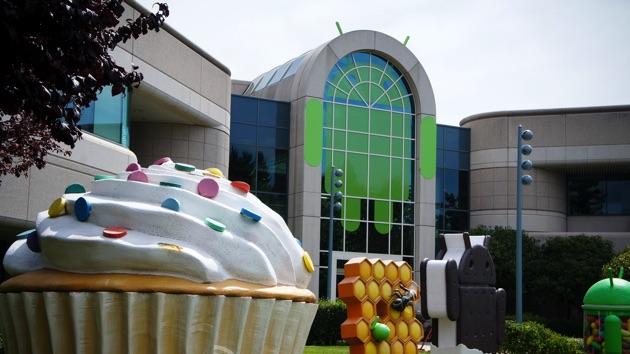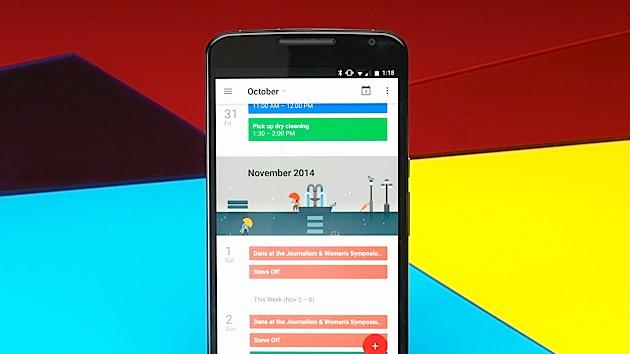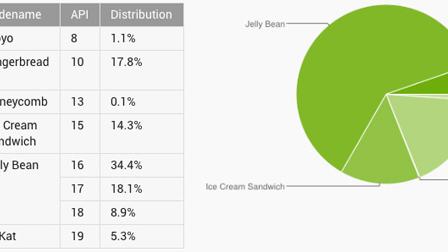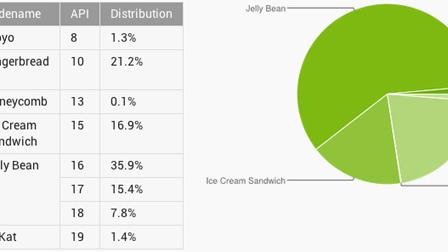froyo
Latest

Marshmallow is now on 10 percent of Android devices
The latest version of Android just hit a big, big milestone. Google's early June developer stats have revealed that Marshmallow is now on just over 10 percent of Android devices, representing a huge jump from just 2.3 percent in March. Notably, only some of that surge can be credited to people upgrading from Lollipop. While the not-quite-current version's adoption did go down (to 35.4 percent), the biggest declines in usage were for Jelly Bean and KitKat. In essence: many of those moving to Marshmallow may well have been replacing devices that were 3 or more years old.

Lollipop becomes the most popular version of Android
At last, there's a new flavor of Android on top of the heap. Google has published updated stats which show that Lollipop is now the most-used version of Android, snagging 36.1 percent of device share in early March versus former champ KitKat's 34.3 percent. It's a big milestone that suggests many Android users are using a reasonably modern take on the mobile platform.

Nearly a quarter of Android users are running Lollipop
Android Lollipop is enjoying its last, shining moment in the sun before Marshmallow arrives in earnest. Google's not-quite-current operating system now accounts for 23.5 percent of active Android users, a healthy 2.5-point boost from what you saw just one month ago. That's still trailing behind Jelly Bean (30.2 percent) and KitKat (38.9 percent), but it's clear that all those new devices and upgrades are starting to add up. The real question is whether or not that momentum will last. Marshmallow is arriving relatively quickly, and shouldn't suffer from the early performance and battery life woes that kept some people from upgrading last year. If the newer release catches on quickly, Lollipop might not reach the lofty adoption rates of its predecessors.

Android Lollipop is slowly (very slowly) hitting more devices
Lollipop didn't exactly take the Android world by storm when it first launched. Early adoption was slow enough that it made no real impact in usage share stats for the first couple of months. People are starting to take to Google's latest dessert-flavored OS, however -- it's finally on the official radar. Google's data now shows that about 1.6 percent of active Android users were using Lollipop as of the start of February. That's certainly not a lot, but it's clear that all those Nexuses and early Lollipop upgrades (most notably from HTC, LG and Motorola) count for something.

Google explains why it's not fixing web security in old Android phones
You might not be happy that Google isn't fixing a web security flaw in your older Android phone, but the search giant now says that it has some good reasons for holding off. As the company's Adrian Ludwig explains, it's no longer viable to "safely" patch vulnerable, pre-Android 4.4 versions of WebView (a framework that lets apps show websites without a separate browser) to prevent remote attacks. The sheer amount of necessary code changes would create legions of problems, he claims, especially since developers are introducing "thousands" of tweaks to the open source software every month.

Lollipop isn't making a dent in Android usage numbers (yet)
Now that Android 5.0 Lollipop is finally rolling out to devices around the globe, you might be wondering just how much of an impact it's making on the Android ecosystem. The short answer: not much. Google has released its latest Android usage stats, and Lollipop doesn't even register yet -- in other words, less than 0.1 percent of Google Play users have moved to the new software. That's not surprising given that both the upgrade and Lollipop-native devices like the Nexus 6 are weeks old at best, but it suggests that the new OS will take a while before it makes its presence known.

KitKat is now running on more than 20 percent of Android devices
In case there was any doubt that KitKat now has a solid foothold in the Android world, Google just offered some proof. Its usage data for early August shows that KitKat is on more than a fifth of active Android devices, at 20.9 percent. That's a healthy improvement over July (17.9 percent), and a big leap over the 14.9 percent we saw in June. The folks in Mountain View aren't explaining the steady growth, but it's easy to figure out what's going on -- big-name devices like the LG G3 and Samsung Galaxy Tab S are bringing this latest OS flavor to a wider audience, and many older gadgets are still getting upgrades.

KitKat is now on nearly 14 percent of Android devices
You know how Apple was keen to point out that only 9 percent of Android users (technically, 8.5 percent) were running KitKat in May? Well, that figure's now out of date. Google has published fresh usage stats which show that 13.6 percent of Android owners are using KitKat as of early June. That's still far from a majority, but it represents a 60 percent jump in a single month. It's not hard to see why the newer OS would be making such big strides. Major new phones like the HTC One and Galaxy S5 have had more time on the market, and KitKat upgrades are still making their way to older gadgets.

KitKat's share of Android devices more than doubles to 5.3 percent
After months of treading water, Android 4.4 KitKat is finally taking off. Google reports that 5.3 percent of Android users are running the newer OS version as of early April; that's more than twice the 2.5 percent that it claimed one month earlier. There's no official explanation for the jump, but it's most likely thanks to a wave of KitKat upgrades from HTC, LG and Samsung. Most older versions lost share as a result. It could be a long, long time before KitKat overtakes Jelly Bean (which dipped to 61.4 percent), but the transition is under way -- and it's only likely to accelerate now that flagships like the Galaxy S5 and new One are reaching store shelves.

Jelly Bean claims 59.1 percent of Android device share as KitKat inches forward
Google has released its first Android device share data for 2014, and it's now clear that many users are flocking to a newer OS version... just not the latest version. While the shiny new KitKat release did climb to 1.4 percent of active devices in January, Jelly Bean was the real winner -- the older software jumped from 54.5 percent in December to 59.1 percent this month. There's no real mystery as to what happened, though. KitKat remains limited to mostly Google hardware, whether it's the Nexus line or Motorola phones; we haven't quite reached that point where large numbers of third-party devices either get KitKat upgrades or ship with the revision pre-installed. That surge may come soon, however, and the team in Mountain View can at least take comfort in knowing that over 60 percent of Android's active customer base is reasonably up to speed.

KitKat claims 1.1 percent of Android device share a month after launch
KitKat may be the new kid on the Android block, but it's already faring quite well. Google's latest OS dashboard reveals that 1.1 percent of active Android devices are running the new platform roughly a month after it became available. Not that its arrival is slowing down Jelly Bean's growth, mind you. The older software now represents 54.5 percent of all Android use, thanks in part to a two-point surge in devices running Android 4.3. However well Jelly Bean is doing, we expect KitKat adoption to rise quickly -- both the Nexus 5 and the first official KitKat upgrades have only been around for a few weeks at most, and there are more updates on the way.

ICS and Jellybean now on a quarter of all Android devices, but over half still stuck on Gingerbread
It seems like only yesterday that Google bundled Ice Cream Sandwich 4.0 in its little biscuit layers and sent it off into the world (it was December, 2011, actually). That Android flavor has since climbed the charts rapidly, around four percent each month for the last while, and now occupies the ROM on 23.7 percent of robot-based devices -- up from 20.8 percent last month. That's in part due to new devices (like many in China) still coming out of the box with it, on top of older warhorses like the Samsung Galaxy Tab 8.9 finally grabbing some ICS. Meanwhile, its smooth-running younger sibling, Jelly Bean, made a slight gain to 1.8 percent of all Google-run slates and phones -- though that will likely change when the Galaxy Note II hits the market en masse and the Galaxy S III OTA 4.1.1 disseminates to all its owners. Meanwhile, Gingerbread still dominates Google OS installed devices at 55.8 percent, probably thanks to delays or denials of newer flavors to legacy devices.

YouTube for Android update brings preloading to Froyo and Gingerbread, YouTube TV queuing
Just because your Android hardware hasn't been upgraded to the most recent (or, next to the most recent) version of the OS doesn't mean you have to miss new features. Google has shipped a new version of its YouTube app that brings the preloading feature we saw arrive on ICS and above devices back in June to Gingerbread and Froyo. You'll still have to be online to watch preloaded videos from your subscriptions or watch later list, but they precache while you're on WiFi and plugged in so you don't have to wait through buffering to show someone Gangnam Style at the bus stop. Otherwise, the initial Watch page has changed slightly, there are more channels in the Channel Store and you can also queue up videos to play later on any YouTube-enabled TV (Google TV, PS3 etc.) device you've paired with your mobile.

Fusion Garage's Grid 10 just won't die, preparing comeback as Compal's Smart Pad PBJ40
Usually, once a gadget gets canned it either just disappears or it ends up stumbling back under a different brand. Because, you know, some unfortunate manufacturer may have an orphaned stock to get rid of, or maybe it doesn't want to waste the expensive tooling developed for the failed product. Either way, judging by a fresh NCC (Taiwan's FCC, basically) filing dug up by our brethren over at Engadget Chinese, it looks like the Grid 10 from the now-defunct Fusion Garage may well crawl out of its grave just like that. While there's still the "Grid 10" branding on the back of the tablet, the two-day-old NCC document recognizes Compal as the company brand (presumably it was Fusion Garage's OEM partner for this), and there's also a new but rather mundane name for the device: "Smart Pad," model "PBJ40." Sadly, there's not much else to look at here apart from the vanilla Android Froyo or Gingerbread (instead of Grid OS) sighting in the pics, as well as the Bluetooth and 802.11b/g/n WiFi mention. So the question is: what will Compal do with this Smart Pad? Resurrect Fusion Garage in Taiwan? Unlikely (though Chandra does like to surprise people). Offload the lot to Taiwanese carriers or stores? We'll bet our money on that.

ICS now on one in five Android devices, Jelly Bean grows to 1.2 percent
Last month was the first time Jelly Bean poked its head up in the Android distribution charts, debuting at 0.8 percent. It's bumped that stat by a significant proportion, if not a crazy absolute amount, to 1.2 percent of smartphones and tablets using Google's OS. But ICS 4.0 was the biggest gainer, moving up sharply from 15.9 percent to 20.8 of devices at the expense of Gingerbread 2.3, which dropped about 3.5 percent from July. Still, at 57.2 percent saturation, that version is still the richest Android confection by a wide margin. Our aging Galaxy S contributed a bit to its demise this month, thanks to CyanogenMod, so where does your own device sit? Check the source for a further breakdown of the stats.

Lexibook kids-tablet coming to the US, makes fifth-graders dream of an Aakash
French educational tech maker Lexibook is bringing its eponymous kiddy-tablet to the US from next month. It's not talking specs or price, but we're expecting it to be close to the Lexibook First currently available in Europe. The seven-inch slate packs a 600MHz processor, 256MB RAM, 4GB storage (expandable to 16GB with an microSD card), parental controls and 802.11 b/g WiFi. The FroYo-running device retails for £150 ($237) over the pond, but if the company tries something similar over here, we suspect people might plump for something a little more powerful, or less expensive, or both.

Ice Cream Sandwich takes a bite out of Gingerbread, represents 15.9 percent of Android devices
Two major updates later (three if you count the tablet-exclusive Honeycomb), and Gingerbread is finally starting to falter. According to Google's latest two week survey of devices accessing the Play store, Ice Cream Sandwich is on the rise, filling out 15.9-percent of the Android user base. That's a full five points ahead of Android 4.0's July score, and it's eating into the OS' other flavors: Gingerbread (Android 2.3) dropped by 3.4-percent, Froyo (Android 2.2) by 1.8 and Eclair (Android 2.1) by a meager half a percent. Google's latest confectionery update, Jelly Bean (Android 4.1), made an appearance as well, eking out a shy 0.8-percent of the market. Check out Google's collection of charts for yourself at the source link below or let us know where your devices falls in the comments.

Google slips out YouTube Android Player API, third-party apps get full Nyan Cat experience (video)
For all of Google's emphasis on integrating its own services across Android, playing YouTube videos outside of the official YouTube app has usually required losing some piece of the experience, whether it's backwards compatibility, mobile optimization or just keeping viewers in the same app where they started. As it turns out, Google was well aware of this problem during Google I/O this year and teased a solution while everyone else was still recovering from their Nexus 7-induced fevers. A new YouTube Android Player API will let third parties integrate a full YouTube player into their Android apps with adaptive streaming, orientation and other special tricks intact. Any Android 2.2 or later device (including Google TV boxes) can come along for the ride, and views will count towards producers getting paid. Full details are only coming in the next few months, but app developers who've been craving a chance to slip in some viral videos can get an early look at the API near the start of the session video below -- or just load the Google I/O 2012 app, which has the code baked in.

Ice Cream Sandwich consumed by one in ten Android devices
The latest Dashboard numbers for Google's Android operating system have been released. The verdict? One in ten devices is leveraging Ice Cream Sandwich as their mobile OS of choice. The numbers, which are current as of July 2nd, put Gingerbread (Android 2.3) in first place with a 64-percent install base; followed by Froyo (Android 2.2) with 17.3-percent and ICS with 10.6-percent. Jelly Bean (Android 4.1), announced just last week at Google's IO Developer Conference, was not included in this instance of the report (as it is not officially available yet). Hit the source link to view all the stats, and feel free to let us know what Android codebase your handset is rocking via the comments.

Final Fantasy 3 now on Android
A remake of 1990's Final Fantasy 3, based on the DS version, is now available on Google's Android operating system, boasting "3D visuals and story sequences only for Android," as well as improved browsing functionality for the monster bestiary and new designs for the Job Mastery cards, according to the game's listing on Google Play.The port will set you back $15.99 and requires that your device runs Android 2.2 (Froyo) or newer. Alternatively, you could buy the iPhone version, Famicom version for about the same price, or the DS version for about $40. You could also go back in time and prevent the Wonderswan Color port from getting informally cancelled, but that might require significantly more effort/less eBay. %Gallery-159491%







